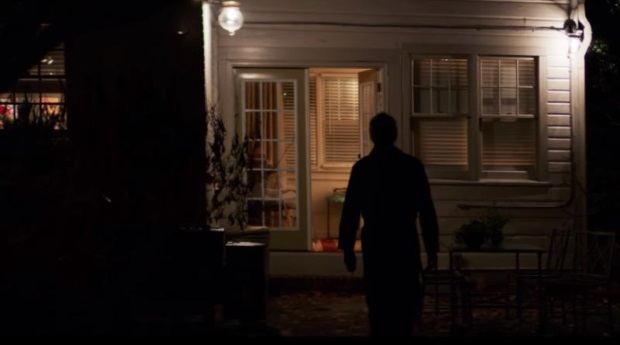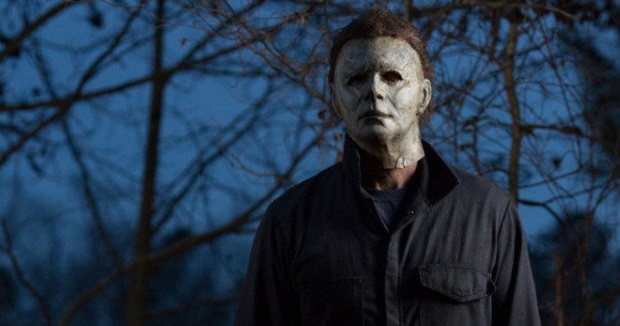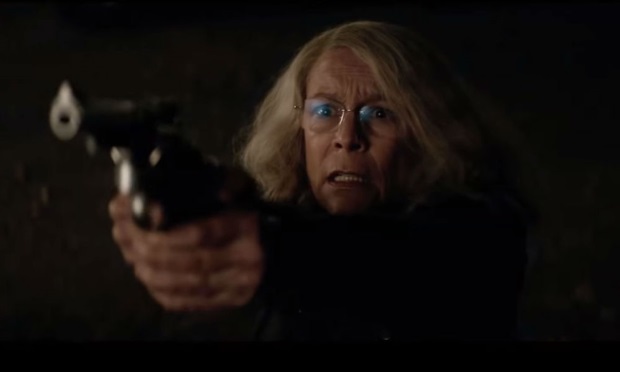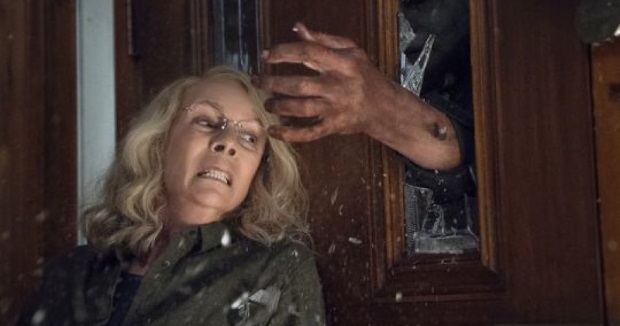David Gordon Green Halloween interview: “How do you make Home Alone, but not Home Alone?”
David Gordon Green on trauma, legacies and bringing Michael Myers back to his roots
Be warned: spoilers below for Halloween (1978) and Halloween (2018)
William Shatner is one of the most iconic faces in horror. Surprisingly, we’re not talking about his turn in 1997’s Kingdom Of The Spiders, or in 1973’s Horror At 37,000 Feet. In fact, his most influential appearance in a horror film didn’t even feature Shatner himself.
We are, of course, referring to John Carpenter’s genre-redefining Halloween, in which deranged slasher Michael Myers dons a white-painted Shatner mask to hunt down his victims, made all the more terrifying by Shatner’s blank, remorseless visage. Myers has become an enduring lodestone of the horror genre, inspiring nine other sequels (of varying degrees of quality) and generations of horror film-makers.
This year, Michael is coming home once more, and the man tasked with bringing him back to Haddonfield is Pineapple Express director David Gordon Green. Green is spearheading the 2018 Halloween, a revisionist sequel that erases every previous Halloween film bar the original. In this re-imagined continuity, Michael was caught the same night as the events of the film, after being shot by Dr. Loomis.
Sacred ground

Green is well aware of the enormity of the task of resurrecting Myers, and the weight of expectation that comes with it. “In film school, it was sacred ground,” he says. “We’d seen all the Halloween movies, but the first one was beloved.”
Green’s love for the film is understandable. He first saw Halloween aged 11, he tells DoG, when he watched it at a friend’s sleepover. “Sure enough, as soon as the parents went to bed, we’re watching Revenge Of The Nerds and having a blast, and then we watch Halloween and I’m scared out of my skin. I’m so scared and affected by the movie that I got sick and called my parents to come get me and take me home!”
“It was a movie that was a big part of my diet, and if you said ‘what’s your favourite horror movie’ I would say ‘Halloween and Texas Chainsaw Massacre‘.”
For his fellow fans, Green has added plenty of subtle nods to the original franchise. Most people will likely spot the obvious homages, like the recreation of the ‘disappearing body’ scene from the end of the first film or the masks from Halloween III: Season Of The Witch (of which Green is a defender), but there’s one easter egg that even hardcore ‘Halloweenies’ may not spot. During Michael’s escape from prison, a man and his son arrive on the scene in a truck; listen closely to the truck’s radio, and you’ll hear the same song that Laurie sang to herself during one of the first Halloween’s early scenes.
“She made up these lyrics with John Carpenter, because they couldn’t afford the rights to a song,” Green explains. “So she sings ‘I wish I had you all alone, just the two of us’, and she has a little tune that’s she’s singing under her breath as she’s walking down the sidewalk.”
“We had a band pretend that they were making that song in 1978 and continue it and put a complete melody and tune behind it. If you listen closely to the radio that the man dials in, it’s a song familiar to the beloved fans of the first film.”
“A storm in his brain”

However, while the new film may be returning to Halloween’s roots, this probably isn’t the Michael Myers that you’re familiar with. This Michael is a whole lot more brutal than Carpenter’s original proto-slasher, and he racks up a bigger body-count within the first 30 minutes or so of Halloween (2018) than in the whole of the 1978 version put together.
“He’s had 40 years to put his imagination to work, and now he’s excited to be back in business,” Green explains; “For all clinical purposes, he seems to have gone dormant – but truly in his mind, it’s the opposite. So when he has an opportunity to exit the facility and begin his rampage, it’s done with 40 years of anticipation.”
“There’s a storm in his brain, and it’s brewing. He’s a predator, so when it has the opportunity to express itself is when he feels complete.”
Of course, a predator is nothing without its prey, but this time the prey is biting back. Jamie Lee Curtis is back reprising her role as Laurie Strode, the only surviving member of Michael’s original victims. Like Michael, however, Laurie has evolved. She’s not the innocent, frightened teen that we first met in 1978, but a haunted, damaged woman that has lived with the mental scars of her experience for forty years.
This kind of trauma is something that Green has some experience with, having previously directed Stronger, the Jake Gyllenhaal film about the Boston marathon bombings. “For many months, I was in rehab facilities with people dealing with PTSD and physical trauma, and… the results of someone dealing with random violence in their lives and traumatic attacks,” he says. “It was very much a part of my psyche choosing to go into the popcorn hollywood movie version of such an event.”
Force of nature

Not only has her ordeal left Laurie with alcohol issues and PTSD, it’s also driven a rift between her and her family, cutting her off from her daughter and granddaughter (played by Judy Greer and Andi Matichak). Part of the reason for this estrangement is the fact that Laurie has been preparing for Michael’s return for the last four decades. She’s turned her house into a fortress, rigging it to the hilt with traps and stocking it with a veritable smorgasbord of firearms.
“I feel like Laurie has considered her home the ultimate trap,” Green says. “That’s the place that she’s in control of her environment…. I just thought it would be fun that she’s got it on lockdown, and one room at a time, she’s simplifying this trap, and the possibilities for where he could be caged.”
“The trick was, how do you make it Home Alone, but not Home Alone? Avoid some of the paint cans and pratfalls and fun that you could have if you’re Macaulay Culkin at 12 years old, and give it to an obsessed, driven, empowered woman.”
Female empowerment isn’t necessarily something you’d expect from a horror movie, much less one written by three male film school buddies, but it’s one of the new Halloween’s most pivotal themes. When Green wrote the original screenplay with collaborators Jeff Fradley and Danny McBride (yes, that Danny McBride), they were writing what Green described as “the Halloween movie that we wanted to see”, but he credits the final product’s girl-power undertones to Matichak, Greer and Curtis, who he calls a “creative force of nature”.
“To have three incredible actresses…. just to have three strong voices that weren’t ‘scream queens’ or ‘final girls’ or ‘damsels in distress’ but three smart, tough, cool females representing three generations of Strodes – it became something beyond what Danny and Jeff and I had imagined on the page, and we’re smart enough to back up and let it be organically what it was – because we were excited about it.”
A world of possibilities

As for what the future may hold for the Halloween franchise, Green is keeping his options open, telling DoG that he wants to wait and see how audiences react to the film and then build on that. “Let’s sit back, see what happens with this movie; if it works, why does it work? Where should it go?”
“The biggest danger is you don’t want to know more about Michael. Even though we’re intrigued by Michael and we love him as a character, we don’t actually want to know more, because then he’s going to be less scary.”
“I also feel like there’s a world of a lot of characters that Carpenter established in the original film,” Green continues, “and there’s other avenues as well. So there’s infinite directions we could go – many of which we’ve talked about and laughed about, and others that we scratch our heads and think seriously about.”
‘But Michael dies at the end of the film,’ you may be thinking, ‘so surely there can’t be a sequel!’ Well, it turns out that Green may have snuck a sneaky clue into one of Halloween’s final shots, hinting that “you have to look very closely at the ending”.
“There’s a shot of him standing there and a medium shot with flames all around him, and then when you cut wide, you may or may not see him in the shot of the basement as it’s burning and it’s engulfed in flames. So you’ve got to look close and see what you see in that image that we hold for just a frustrating amount of time.”
Halloween is in cinemas now.